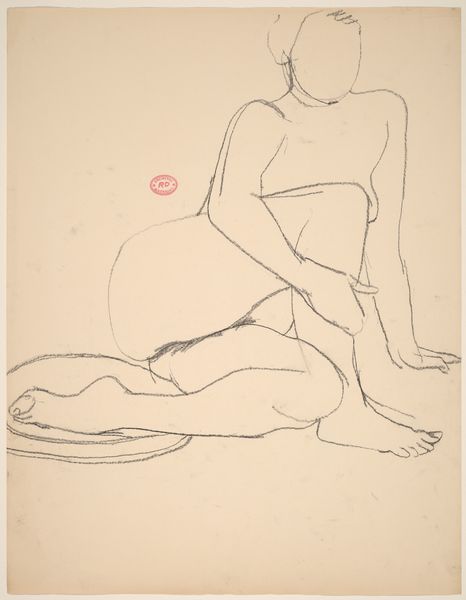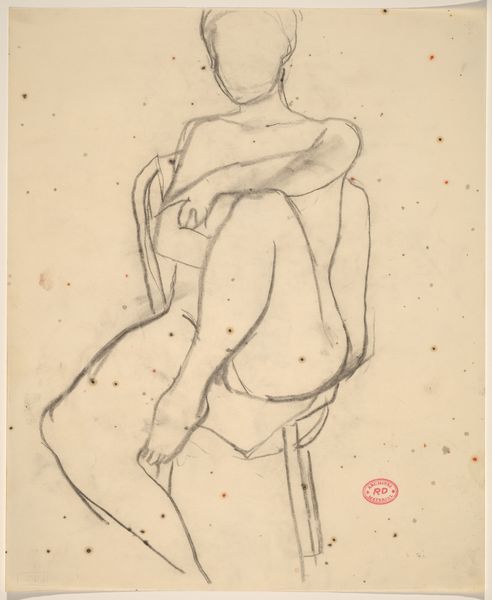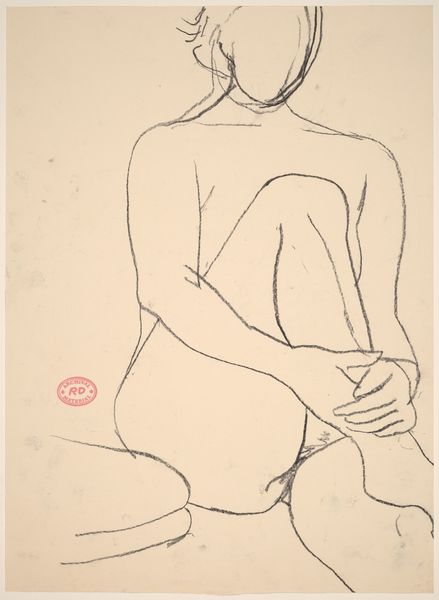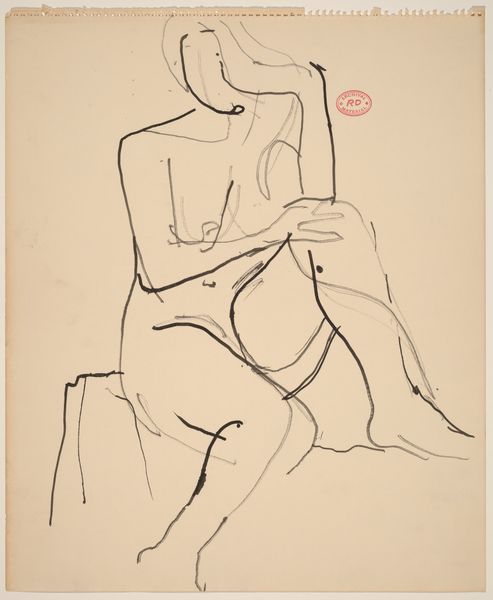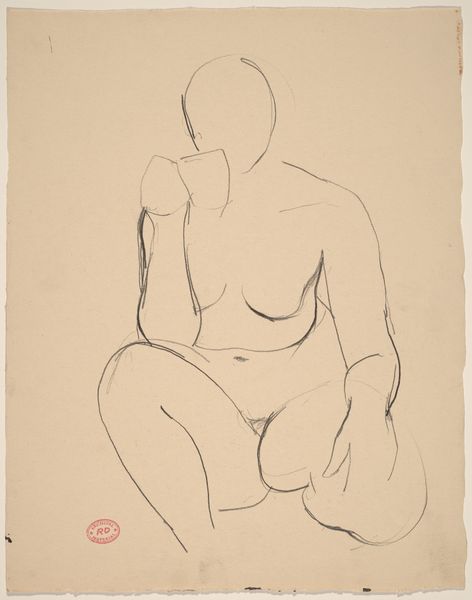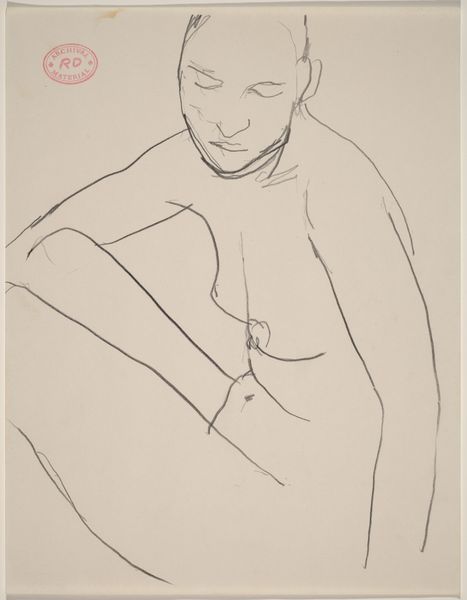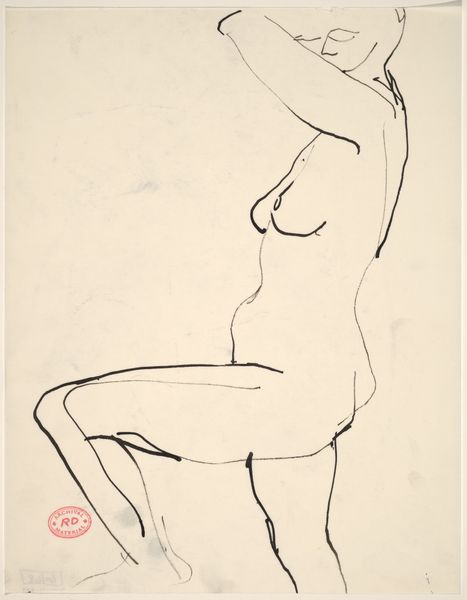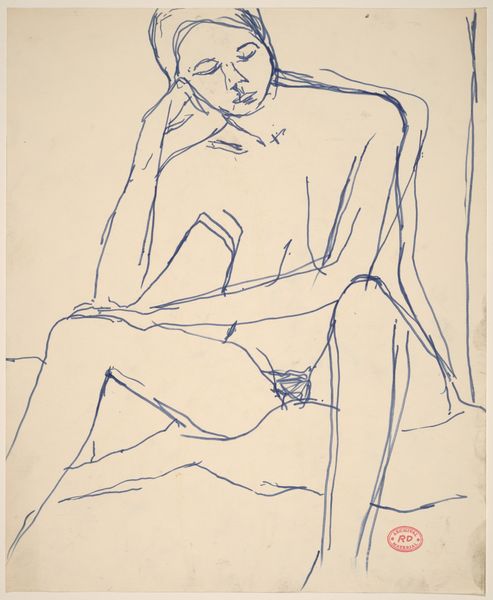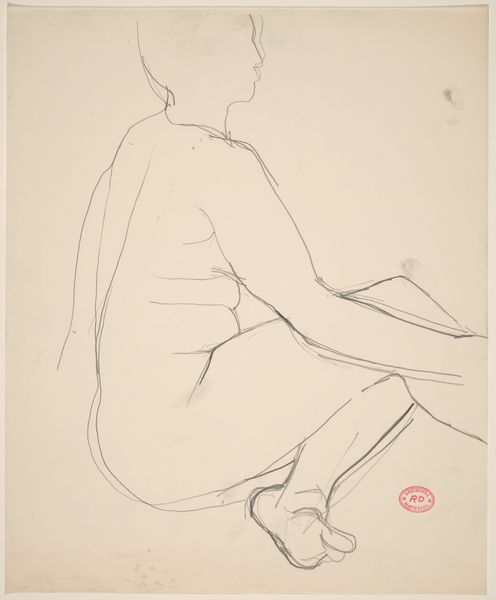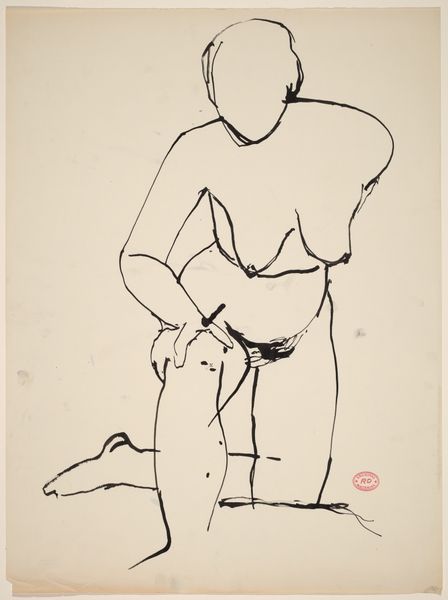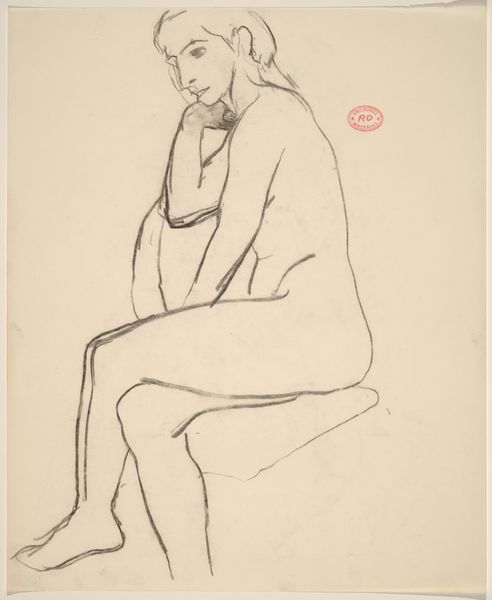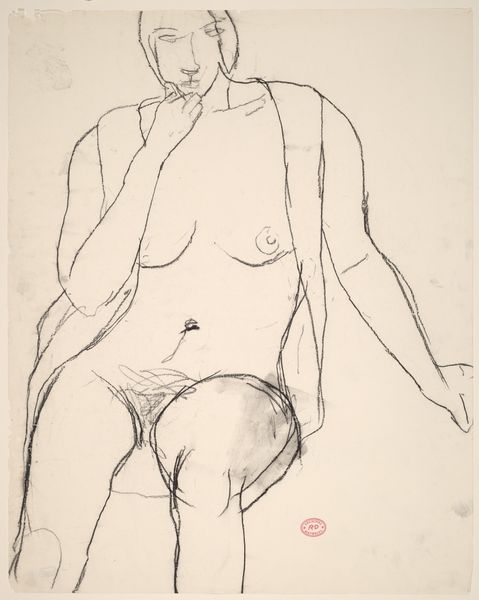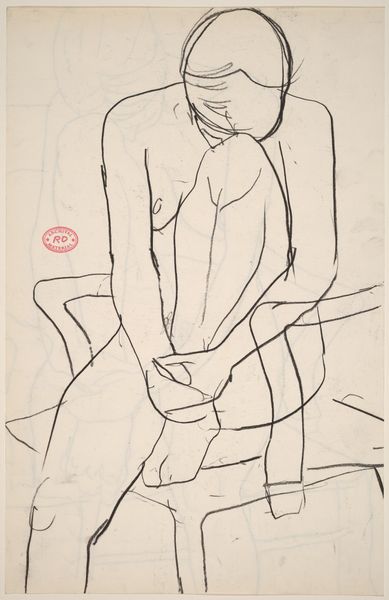![Untitled [seated nude with his right arm over the chair back] [recto] by Richard Diebenkorn](/_next/image?url=https%3A%2F%2Fd2w8kbdekdi1gv.cloudfront.net%2FeyJidWNrZXQiOiAiYXJ0ZXJhLWltYWdlcy1idWNrZXQiLCAia2V5IjogImFydHdvcmtzLzBmNWUwODg1LWNmOGUtNDRlYi1iODJmLWYxYmE0ZmM1YzM5MS8wZjVlMDg4NS1jZjhlLTQ0ZWItYjgyZi1mMWJhNGZjNWMzOTFfZnVsbC5qcGciLCAiZWRpdHMiOiB7InJlc2l6ZSI6IHsid2lkdGgiOiAxOTIwLCAiaGVpZ2h0IjogMTkyMCwgImZpdCI6ICJpbnNpZGUifX19&w=3840&q=75)
Untitled [seated nude with his right arm over the chair back] [recto] 1955 - 1967
0:00
0:00
drawing, graphite
#
portrait
#
drawing
#
figuration
#
bay-area-figurative-movement
#
graphite
Dimensions: overall: 56 x 43.5 cm (22 1/16 x 17 1/8 in.)
Copyright: National Gallery of Art: CC0 1.0
Editor: Here we have Richard Diebenkorn's "Untitled [seated nude with his right arm over the chair back] [recto]", a graphite drawing made sometime between 1955 and 1967. It feels unfinished, somehow vulnerable, in its stark simplicity. What strikes you when you look at this drawing? Curator: Immediately, I am drawn to the interplay between line and form. Notice how Diebenkorn uses line not just to define the figure but to create planes, almost as if he's abstracting the human form into geometric shapes. The relationship between the contours and the negative space they define is crucial here. What do you observe about the weight and variation of the lines themselves? Editor: I see some are much bolder and darker than others, especially in the legs, which makes them look more substantial. Curator: Precisely. These heavier lines not only describe form, but also create a sense of depth and shadow, enhancing the three-dimensionality within the two-dimensional surface. This formal strategy contributes to the overall composition. Do you think the lack of facial details is important here? Editor: Definitely, I feel like it emphasizes the shape of the head more than the person's identity. It becomes more about the form of the head itself, doesn't it? Curator: Exactly. Diebenkorn is more interested in exploring the fundamental structures of form than in capturing a specific likeness or emotion. This concentration on shape, line, and composition invites viewers to engage with the drawing on a purely visual level. Editor: I now better appreciate the subtle complexity within this seemingly simple drawing. It makes you look closer. Curator: Indeed, by attending to these intrinsic formal qualities, we find a deeper understanding of Diebenkorn's artistic intentions and the artwork’s aesthetic power.
Comments
No comments
Be the first to comment and join the conversation on the ultimate creative platform.
